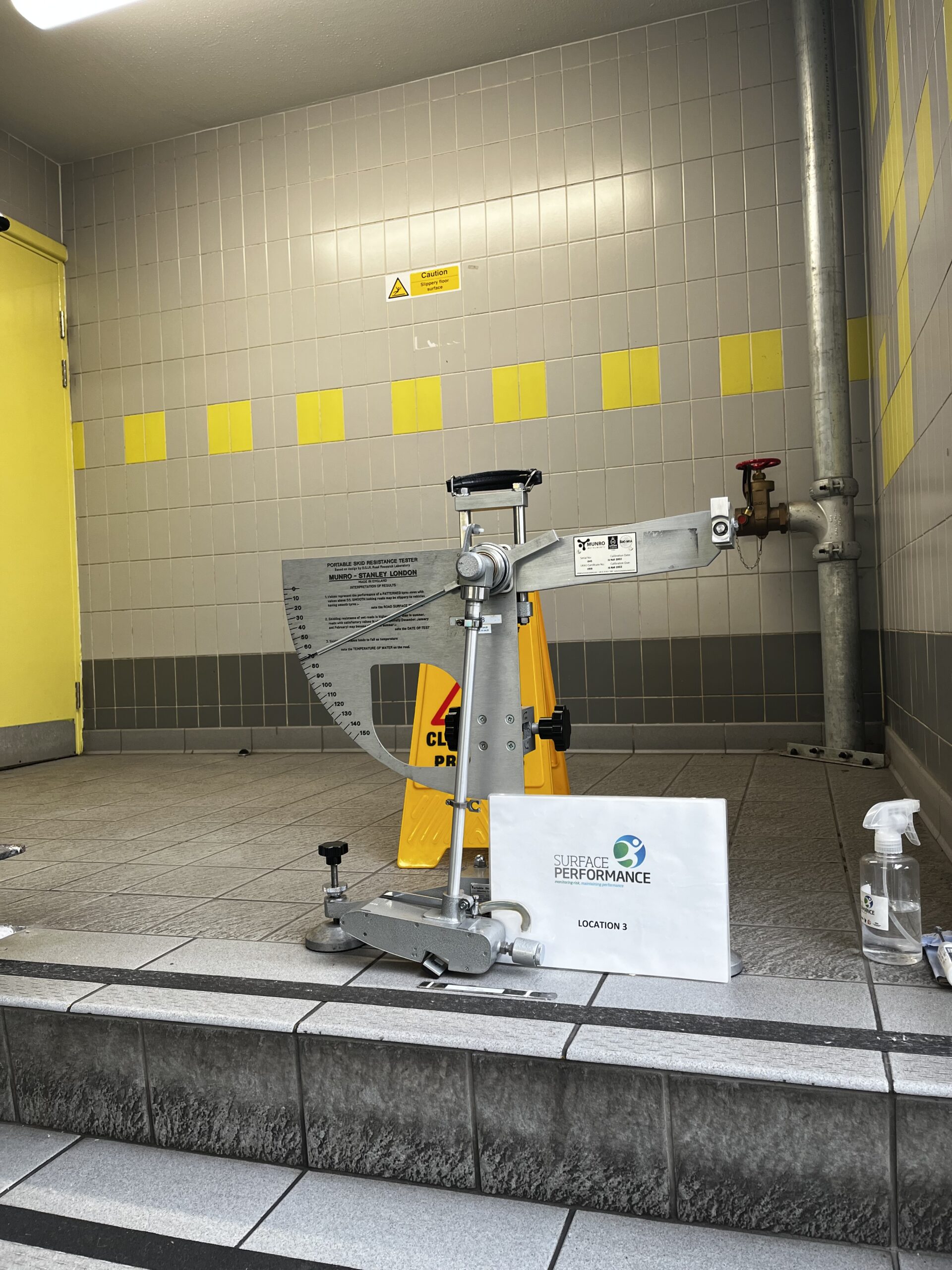Ensuring Safety in Car Park Areas: The Importance of Pendulum Slip Resistance Testing
Car park areas are high-traffic zones that accommodate a constant flow of vehicles and pedestrians. Ensuring the safety of these areas is crucial to prevent accidents and minimise liability risks. One essential aspect of car park safety is slip resistance testing, which helps identify and address potential slip hazards. In this article, we will explore the importance of pendulum slip resistance testing in car park areas.
The Risk of Slips and Falls
Slips and falls are common accidents that occur in car parks, leading to injuries, property damage, and liability claims. Rain, snow, and ice can create slippery conditions, while oil and other automotive fluids may further contribute to the risk. Pedestrians, drivers, and cyclists are all susceptible to these hazards, making slip resistance an important factor in ensuring safety.
Pendulum Slip Resistance Testing
Pendulum slip resistance testing is a widely recognised method for assessing the slip resistance of surfaces, including those found in car parks. This testing method employs a pendulum device that simulates the foot motion of a person walking. The pendulum’s rubber slider, which mimics a shoe sole, is pulled across the surface being tested. The result is a measurement known as the Pendulum Test Value (PTV), which indicates the surface’s slip resistance.
Benefits of Pendulum Testing in Car Parks
- Objective Measurement: Pendulum slip resistance testing provides an objective and quantifiable measure of slip resistance, making it a valuable tool for evaluating the safety of car park surfaces.
- Standardized Testing: Many countries and regions have established standards and regulations for slip resistance testing, making it easier for car park operators to ensure compliance with safety requirements.
- Preventing Accidents: Identifying and rectifying slip hazards in car parks can significantly reduce the risk of accidents, protecting pedestrians, drivers, and property.
- Liability Reduction: Car park operators can reduce their liability by conducting regular slip resistance testing and demonstrating their commitment to safety.
- Cost-Effective: Addressing slip hazards through preventive measures is often more cost-effective than dealing with accidents, legal claims, and potential fines.
Maintenance and Surface Improvements
Pendulum slip resistance testing can lead to a variety of actions to enhance safety in car park areas:
- Routine Cleaning: Regular cleaning and maintenance of car park surfaces help remove debris and substances that may reduce slip resistance.
- Coatings and Sealants: Applying specialized anti-slip coatings and sealants can improve the slip resistance of surfaces, especially in high-traffic areas.
- Surface Replacement: In cases where the surface is severely worn or damaged, replacement with a more slip-resistant material may be necessary.
- Signage and Markings: Proper signage and markings can guide pedestrians and drivers, helping to prevent slips and falls.
Safety in car park areas is a paramount concern, and pendulum slip resistance testing plays a vital role in ensuring that safety is maintained. By conducting regular testing, car park operators can identify and mitigate slip hazards, thereby reducing the risk of accidents and liability. Implementing preventive measures not only safeguards the well-being of those who use the facility but also provides cost-effective solutions that benefit both the operators and the community. In a world where safety is paramount, pendulum slip resistance testing is an essential tool for creating secure car park environments.

